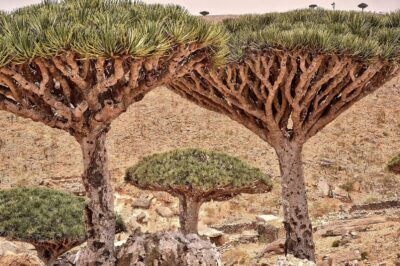by Bill Murray
A nasty typhoon punished southeast Africa in early 2023. Cyclone Freddy dropped six months of rain in six days, killed 1400 and pounded the poor, overmatched region for thirty-eight long days. From its origins in the Indonesian archipelago, Freddy wound up across the entire breadth of the Indian Ocean before battering the continent, reversing course, then returning to do it again. It was the strongest tropical cyclone ever recorded.
 Malawi, Zimbabwe and Mozambique almost never get good press. The modest coverage of last year’s hurricane that struck twice paled alongside coverage of a terror attack in 2021 in the northern Mozambican coastal town of Palma. Survivors recount an utterly harrowing siege, an attack so ferocious that French energy giant Total fled from its $20 billion liquified natural gas investment there, and operations have yet to resume.
Malawi, Zimbabwe and Mozambique almost never get good press. The modest coverage of last year’s hurricane that struck twice paled alongside coverage of a terror attack in 2021 in the northern Mozambican coastal town of Palma. Survivors recount an utterly harrowing siege, an attack so ferocious that French energy giant Total fled from its $20 billion liquified natural gas investment there, and operations have yet to resume.
Around 200 Black locals and 20 expat contractors found themselves holed up inside the Amarula Palma Hotel. Authorities called in South African private military company Dyck Advisory Group and, as Amnesty International described things,
After the majority of the white contractors and a few well-off Black nationals – among them the Administrator for Palma – were rescued, those left behind attempted to flee by ground convoy but were ambushed by ‘Al-Shabaab.’
This isn’t the better known Al-Shabaab, but rather a local and more rag-tag group loosely affiliated with other Islamic insurgents. Theirs is a shaky, patchwork ideology incorporating local grievances, like Total’s control over local mineral wealth.
Several countries, Angola, Botswana, Rwanda, South Africa maintain a peacekeeping presence in northern Mozambique now and low level fighting is still going on, 36 months later. The poor governance and political instability that give rise to insurgencies like these color the rest of our story.
•
Today’s article is part two of a survey of the islands around Africa. Part one took us from Portugal south to Cape Town. Today we travel north through more restive East Africa, first with a quick sweep along the coast, then we’ll visit some larger islands farther offshore.
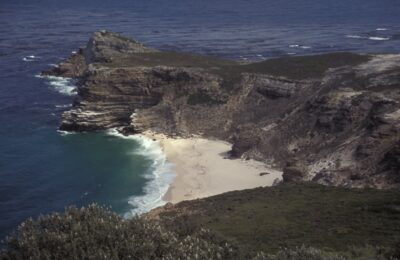
North from Cape Town the coast is curiously free of inhabited islands right around to Maputo, the Mozambican capital. There, a small tropical island called Inhaca, offering mostly small guest houses, lodges and budget-friendly bungalows, forms part of the bay that protects Maputo.
In contrast to the modest accommodation near the capital, the 40-odd mile long Bazaruto archipelago north of Maputo lures foreign visitors to expensive holiday resorts, sold as add-ons to wildlife safaris in South Africa.
‘You’ve come all this way, you’ve pounded through potholes in safari vehicles for days, now why not pamper yourself with sand and serenity?’ That’s the pitch. Unwind in paradise. Renew your senses with our unparalleled luxury. Please please please, come to our resort and make it a safari and sand experience. Wildlife and waves. Whatever.
The Bazaruto archipelago wasn’t affected by the conflict around Pemba itself, it’s well to the south, but bookings suffered from the perception of regional instability. The pall cast by the violence resulted in discounts, package deals and outreach to markets beyond the usual Europeans and Americans.
In the bigger picture, blows to high end tourism rank low on the list of Mozambique’s woes. Something like eight out of ten Mozambicans grow cassava, maize, cashews and cotton. So you might expect Mozambique’s agriculture sector would provide for domestic needs with maybe even a little something left over for Malawi, Zambia or Zimbabwe.
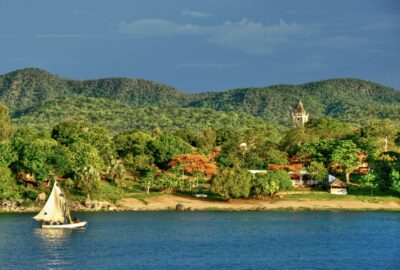
In fact, Mozambique’s contribution to southern African food security is minimal. It’s just one cost of long term underinvestment in infrastructure and miserable, entrenched, ineffectual, corrupt government.
Dale T. McKinley, an author and PhD in International Political Economy and African Studies in Johannesburg, puts it down to a series of “‘vampire’ governments that have largely abandoned the people they supposedly govern, institutionalised corruption in both the public and private sectors and, vast socio-economic inequalities between a survivalist majority and tiny numbers of elites.”
Here’s how little the potential of a 1600 mile, mostly pristine coastline lined with wildlife conservation initiatives catches Maputo’s imagination: the tourism sector’s contribution to national GDP in 2019 was just 6.2 percent.
Near Tanzania but just inside Mozambique, much of the Quirimbas chain of 32 islands is effectively unexplored, potentially fascinating but subject to unrest and refugee flows because of the ongoing insurgency.
East Africa’s Muslim population increases with travel north. Perhaps in part because the Muslim population in Tanzania is less marginalized than in Mozambique, so far Tanzanian authorities have held insurgent activity to skirmishes on the Mozambique border.
Northbound through coastal Tanzania, coral reefs that ring several islands have suffered badly from worldwide coral bleaching over the last thirty years. Recovery is slow but Chumbe Island, in the Zanzibar Channel, is home to the Chumbe Island Coral Park, hosting seven exclusive eco-bungalows.
Among inhabited Tanzanian islands, most prominent are Mafia, where swimming with whale sharks is a tourist draw, and Zanzibar. Zanzibar’s fabled name helps east African tour providers lure visitors as a safari add-on. Stone Town, a UNESCO World Heritage site with narrow, bazaar-like streets, and the palace of a former Sultan, evoke the Omani Al Bu Sa’id dynasty’s former rule along parts of the Swahili coast.
Kenya’s second city and main port of Mombasa sits on a two by three mile island, connected to the mainland by a causeway. Farther north near Somalia, Kenya’s Lamu archipelago has seen its ups and downs. Because of the anarchy across the border, in the 21st century they’ve mostly been downs.
In 2011 Kenya suffered a terror calamity of its own, when British tourist Judith Tebbutt, staying at the Kiwayu Safari Village resort, was seized and held hostage for 193 days by Somali pirates. Her husband David was killed trying to protect her. Tebbutt was released after her son paid a ransom.
Tourist arrivals plummeted, but by 2019, the year before before Covid, Lamu saw 20,000 international visitors, about 65% of its previous peak. Tebbutt has written a memoir.
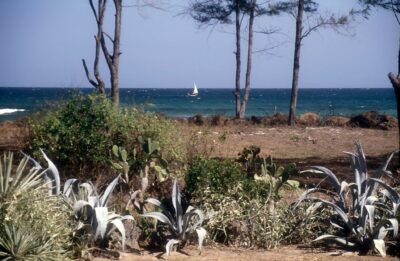
A number of uninhabited islands lie off the Kenyan coast, many with substantial coral reefs, but reef diving is available, in places, right from the mainland shore.
Finally, Somalia. The Bajun Islands have been inhabited for centuries, originally as trading posts along Indian Ocean maritime routes. Theirs is a polyglot culture, a blend of Bantu, Arab and Portuguese, following Somalia’s ancient trading history.
In practice, since Somalia hasn’t had a functioning central government since 1991, its offshore islands have been off-limits to tourism for decades. Who really knows what’s going on out there?
Several larger, more heavily populated, diverse and vibrant islands lie farther offshore, up and down the coast. Let’s look at a few.
Madagascar
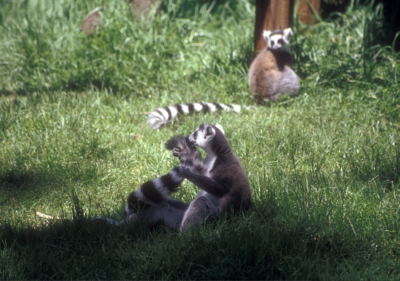
Geologically, Madagascar has an antisocial streak. Now 250 miles east of Mozambique, it began to drift away from Africa maybe 180 million years ago, and has spent that time becoming a world of its own. Scientists reckon that 90-plus per cent of all its mammals exist nowhere else on Earth. It’s the Galapagos without American tourists.
I found the capital and main town, Antananarivo, a vivid, hopeless but good-humored basket case — and a whole lot of fun. Rural Burma and Madagascar’s cities are the two most exotic, non-Western places I have ever been.
Zoma means Friday and it’s also the name of the weekly market, the Friday pageant of humanity and small-bore commerce stretching all the way down L’Avenue de l’Indépendance.
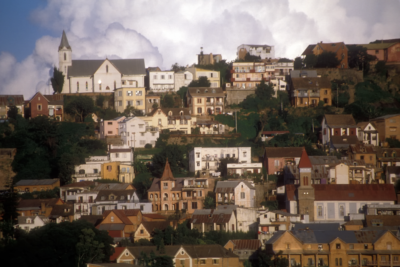
The guidebook (there were guidebooks back then) told us “The Zoma is notorious for thieves. It is safest to bring only a small amount of money in a money belt or neck pouch. Enticingly bulging pockets will be slashed,” but we made it through, free from petty larceny.
Réunion
Not far east of Madagascar, Réunion Island is a département of France and wants to keep it that way. Here is a measure of Réunion’s orientation: on many days there are multiple 5800-mile flights to Paris; meanwhile the only nonstop flight to the African continent is to Johannesburg, and only twice a week.
It’s gorgeous, just not very well known. One of the not many ways Réunion is semi-famous is that in 1841 an enslaved 12-year-old boy named Edmond Albius worked out a way to pollinate vanilla. It’s the primary method used still today. Another is that wreckage from Malaysian Airlines MH370 washed up on a Réunion beach in July 2015, more than a year after the flight disappeared. Read more about Réunion in a column I wrote after a visit there in 2023.
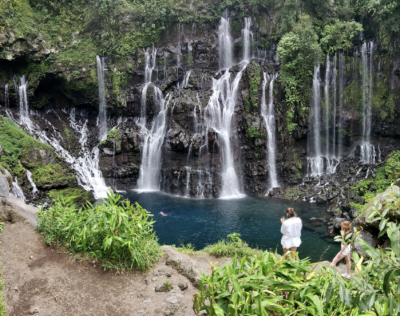
From Réunion, France stages support missions to the French-claimed Kerguelen archipelago farther to the southeast. That archipelago comprises around 300 islands, islets and skerries inhabited only by scientists, researchers, and support staff from the French Antarctic Program.
Predictably and not very imaginatively, late 18th-century French explorers named the Kerguelen archipelago’s main island Grand Terre. Captain Yves-Joseph de Kerguelen-Trémarec believed he had found the much sought Terra Australis at last. He left eighteen men behind, rushed home for reinforcements, and by the time he got back two years later only three were still alive.
The most useful plant the explorers found was cabbage. Author Jean-Paul Kauffman wrote that Captain Kerguelen ended up so disappointed that he seemed to boycott his own discovery. He avoided getting off his ship, “moving around the archipelago for more than a month before making his escape.”
Kerguelen is bleak, desolate and grim. And so prohibitively windy that Grand Terre’s only settlement contains a chapel called Notre Dame des Vents, our lady of the winds. Butterflies there have evolved without wings. Had they wings, they would blow into the sea. Instead they scurry between rocks.
There is no air service to Kerguelen, and only a small pier. Supply ships anchor offshore. The support ship Marion Dufresne, which has berths for 8-12 tourists for around €9000 per person, calls four times a year, sailing from the facilities of the French Southern and Antarctic Lands in St. Pierre, Réunion.
The Comoros
Rather than too few people as in Kergeulen, the French département of Mayotte, part of the Comoros Islands chain and France’s poorest département, complains of far too many. Closer to the continental mainland, Mayotte and the Comoros are correspondingly much more closely tied to African ethnicity and culture.
In 1974 the islands held referenda resulting in independence for the Comoros, while Mayotte elected to stay French. Since then, although poor, Mayotte has drawn away from the rest of the Comoros in standard of living, healthcare resources and general well being so that today, through immigration from the other islands, about half of Mayotte’s population is not native and thus not considered French.
Resulting tensions lead to periodic violence. Video from Mayotte’s troubles looks akin to northern Mozambique’s — disaffected youth wielding machetes.
Now and then France threatens deportation of immigrants from Mayotte back to Comoros and an overburdened Comoros resists. The BBC’s Hugh Schofield had good background in a February report, the gist of which was that Mayotte has a ‘small boat’ problem that makes the UK’s immigration battles in the Channel “seem puny by comparison.”
“Hundreds of people arrive every week in boats from the Comoros,” he reported, “in addition to whom there are now increasing numbers of asylum seekers from the Great Lakes region of Central Africa. In the island’s hospitals more than 10,000 babies are being born every year – the majority to mothers from the Comoros.”
Meanwhile just last week the Comorian president began his fourth term after a disputed election. He was sworn in before a dodgy leaders club including the presidents of Madagascar and Mozambique, among others.
Mauritius
Réunion’s closest neighbor lies just 400 miles over the horizon, northeast toward India. There are many flights a day between the Réunion and Mauritius, but we arrived from Mumbai.

Being immediately lost in a new country, driving a small rental car on the left, using a stick shift with your left hand in periodic sideways tropical rain through the only traffic jam in all of paradise can become a chore after awhile. But only if you let it. You have to be damned determined not to let it.
Soon enough we skirted the capital, Port Louis, aiming for our place to stay in the northwest. Even in blinding rain there was no doubt where the fish market was.
Port Louis is not a languorous place. Mauritius’s population density compares with those of Taiwan and Barbados, and Port Louis is home to about 150,000. It’s busy and punctilious and — at the time of our visit, at least — smelled like noxious, older model Tata buses.
Inland behind Port Louis rises a ridge of of three mountainlets, Points des Guibies, le Pouce and Pieter Both. Pieter Both is impossible – a boulder balanced precariously at the top.
Mauritius changed its colonial affiliation four times, beginning with the Dutch, whose traders used it as a supply stop on the way around to Java before abandoning it in 1710, notably after having hunted the dodo to extinction. Also notable (maybe, to somebody), Abel Tasman left from here in 1642 to discover Tasmania.
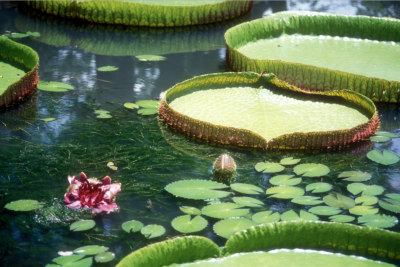
The Portuguese, British and French all had their go at Mauritius until independence in 1968. Seewoosagur Ramgoolam served 13 years as Prime Minister, and when he died in 1986 his name was added to a host of things around the island, like the Sir Seewoosagur Ramgoolam Botanical Garden in the town of Pamplemousses, which is French for grapefruit, and in this case refers to a particular Mauritian fruit.
Seychelles
Farther north the utterly idyllic Seychelles Islands are, like Mozambique’s Ilhas de Bazaruto, pitched hard as high end add ons to east African safaris. Based on the short visit I made there many years ago they are, indeed, one of the most beautiful places in this world. It was so long ago, I’m sorry to say I’ve lost the slides from that trip. But while no insurgency problem looms, as in Mozambique, a different problem does: heroin.
As the BBC has it:
“the equivalent of nearly 10% of the working population are addicted to heroin, according to the Agency for the Prevention of Drug Abuse and Rehabilitation (APDAR) in the Seychelles. Per capita, the Seychelles suffers from the highest rate of heroin abuse in the world.”
Socotra
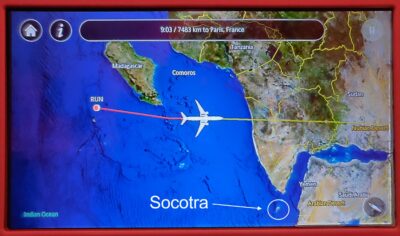
We’ve covered some ground. Part one of this two part series began with the Azores in the mid-Atlantic, and we finish far to the east on an island that’s a hybrid of the Horn of Africa and the Arabian peninsula.
Socotra Island lies just about due north of the Seychelles, off both the Horn of Africa and the Arabian peninsula. Neither can really lay claim to Socotra geographically, but Yemen does politically. Here is an unusually oriented photo from the seatback map on a flight from Réunion to Paris. It’s not a part of the world you find yourself every day, and it gives some idea of Socotra’s obscurity.
Socotra’s flora is unique as Madagascar’s fauna, and for the same reason: sustained, isolated evolution over long periods of time. Consider, for example, is the Dragon’s Blood tree below.
Socotra is far enough from Somalia, about 150 miles east of the Horn of Africa, to have been spared from Somali piracy. With little tourist infrastructure and flights only via Yemeni Airlines from Aden for the longest time, Socotra has remained a time capsule, like Asmara, the capital of Eritrea, a thousand miles away on the Red Sea, parts of which remain a frozen in time snapshot of Italian occupation. Now two nonstops a week from Abu Dhabi to Socotra have opened up travel, but only just a crack.
